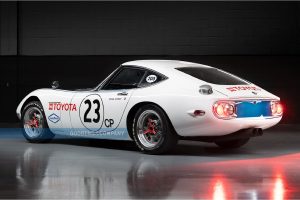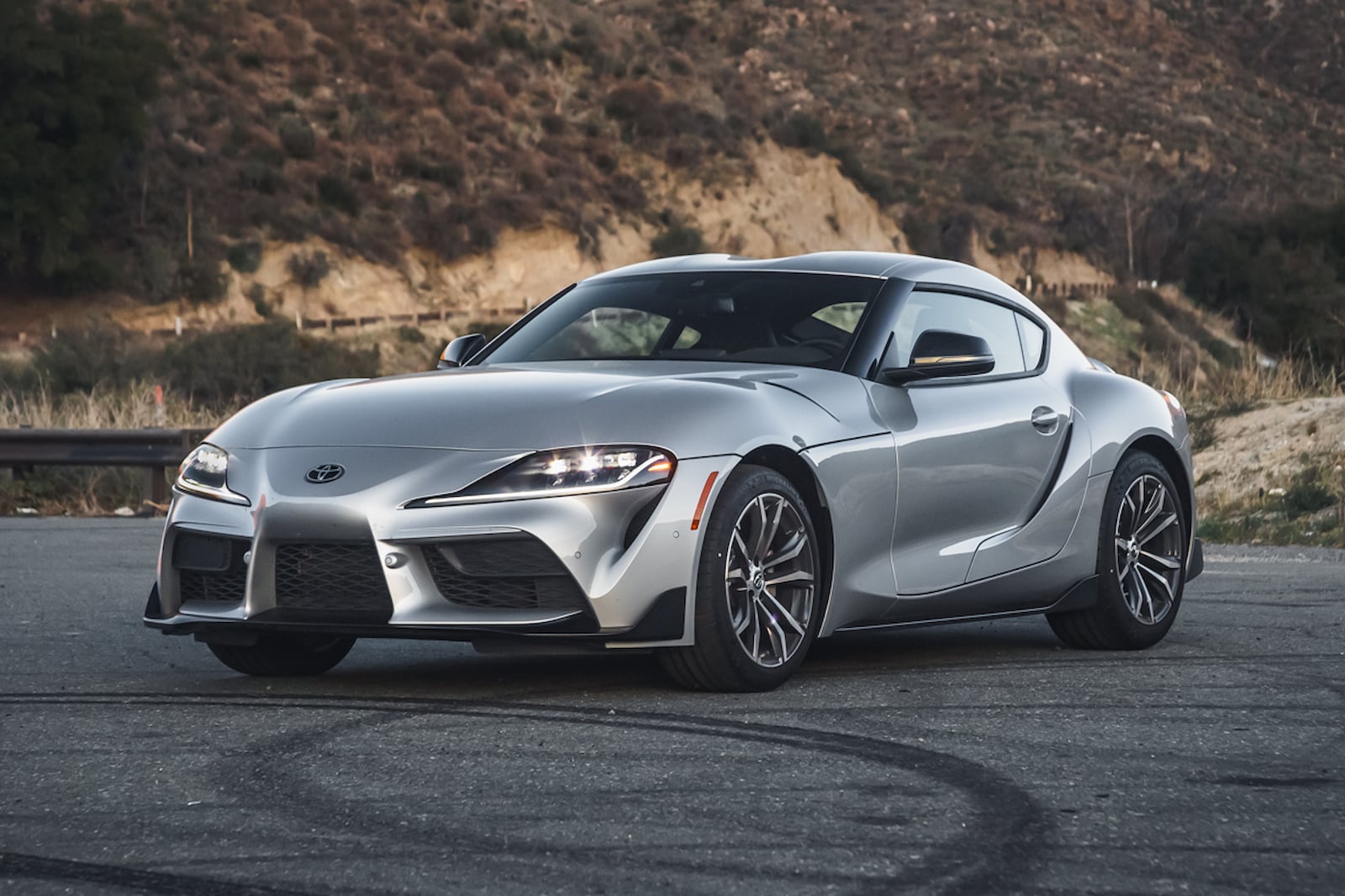Toyota. The name conjures images of reliable sedans and efficient hybrids, not necessarily high-octane performance machines. But beneath that reputation for practicality lies a surprising history and present of thrilling sports cars. This article peels back the hood on Toyota’s fastest cars, exploring the legendary models that have quenched the thirst for speed among driving enthusiasts.
From Pioneering Spirit to Modern Marvels: A Legacy of Performance

2000GT (1967-1975): The Breathtaking Beginning
The 2000GT marked a pivotal moment for Toyota. This limited-production coupe boasted a sleek, aerodynamic design that rivaled the best European sports cars of the era. Under the hood, a powerful 2.0L straight-six engine propelled it to a respectable top speed of over 140 mph. While not the absolute fastest car of its time, the 2000GT showcased Toyota’s engineering prowess and ignited a passion for performance within the company.
Celica (1970-2006): The Rally-Bred Legend
The Celica became a beloved choice for driving enthusiasts during the golden age of Japanese sports cars. Offered in various trims with rear-wheel-drive and a range of potent engines, the Celica delivered a thrilling driving experience. Notably, the later generations, particularly the Celica GT-Four, achieved success in the World Rally Championship, further solidifying its reputation as a performance icon.
Supra (1978-2002, 2019-Present): The Undisputed Hero
The Supra is arguably the most iconic high-performance Toyota ever produced. Initially introduced as a performance variant of the Celica, the Supra eventually carved its own path as a legendary sports car.

Early Supras, powered by turbocharged engines, offered impressive acceleration and sharp handling, making them a favorite among performance enthusiasts. The later generations continued this legacy, culminating in the iconic twin-turbocharged 2JZ-GTE engine. After a hiatus, the Supra nameplate returned in 2019, co-developed with BMW. The modern GR Supra retains the spirit of its predecessors, offering exhilarating performance and a meticulously crafted chassis.
MR2 (1984-2000): The Mid-Engined Marvel
The MR2 stood out for its unique mid-engine layout, prioritizing agility and handling over raw power. This configuration resulted in a car that was a joy to navigate through winding roads, offering a distinct driving experience compared to the front-engine Celica and Supra. While not the most powerful Toyota, the MR2 carved a niche for itself among enthusiasts who valued precise handling and a lightweight chassis.
GR Supra (2019-Present): The Modern Masterpiece
The GR Supra marks the return of a legend and a collaboration between Toyota and BMW. This modern iteration captures the essence of the original Supra, boasting a powerful turbocharged inline-six engine and a meticulously crafted chassis. The GR Supra delivers exhilarating acceleration, precise handling, and a luxurious interior, making it a worthy successor to the iconic nameplate.
GR86 (2022-Present): The Attainable Enthusiast’s Dream
The GR86, co-developed with Subaru, offers a compelling option for those seeking an affordable yet engaging sports car experience. Borrowing heavily from the Subaru BRZ, the GR86 focuses on lightweight construction and driver engagement. This rear-wheel-drive sports car prioritizes handling and driver feel, making it a blast to throw around on a scenic route.

Camry TRD & Avalon TRD (2020-Present): The Unexpected Thrillers
Toyota doesn’t limit performance to dedicated sports cars. The Camry TRD and Avalon TRD cater to drivers who desire a touch of excitement in their everyday sedans. These trims boast more aggressive styling, sport-tuned suspensions, and upgraded brakes, offering a more dynamic driving experience compared to their standard counterparts.
Lexus LFA (2010-2012): The Exotic Supercar
While not bearing the Toyota badge, the Lexus LFA deserves mention for its remarkable performance. This hand-built supercar showcased Toyota’s engineering prowess with its naturally aspirated V10 engine, pushing out over 550 horsepower and achieving a top speed exceeding 202 mph. The LFA represents the pinnacle of Japanese automotive engineering and remains highly coveted among collectors and enthusiasts alike.
Conclusion: A Legacy of Speed You Might Not Have Expected
Toyota’s reputation for reliability and fuel efficiency shouldn’t overshadow their impressive history of high-performance cars. From the pioneering 2000GT to the modern GR Supra and the surprising thrill of the Camry TRD, Toyota offers a range of vehicles that cater to the need for speed in all its forms. So, the next time you see a Toyota badge, remember – there might be a velocity vanguard lurking beneath the hood.
Frequently Asked Questions (FAQs)
- What is the undisputed king of speed in Toyota’s history?
The answer depends on how you define “Toyota.” The limited-production Toyota GT-One, a race car built for the grueling 24 Hours of Le Mans endurance race, boasts the highest top speed of any Toyota at over 236 mph. However, for production cars, the crown goes to the Lexus LFA with a top speed exceeding 202 mph.
- Which Toyota currently reigns supreme in the speed department?
The current production title for the fastest Toyota goes to the GR Supra, with a claimed top speed of 183 mph.
- What’s the most affordable option for a speedy Toyota?
The GR86 offers a compelling balance of performance and affordability. While not the absolute fastest Toyota, it delivers a thrilling driving experience at a relatively accessible price point.
- Does Toyota offer any performance-oriented SUVs?
While not traditionally known for speed, Toyota surprised many with the RAV4 Prime. This plug-in hybrid SUV boasts impressive acceleration thanks to its combination of a gasoline engine and electric motors.
- Where can I learn more about these high-performance Toyotas?
The official Toyota website offers information on their current performance models like the GR Supra and GR86. To delve deeper into Toyota’s rich performance heritage, enthusiast websites and forums dedicated to Japanese sports cars can provide valuable insights.




